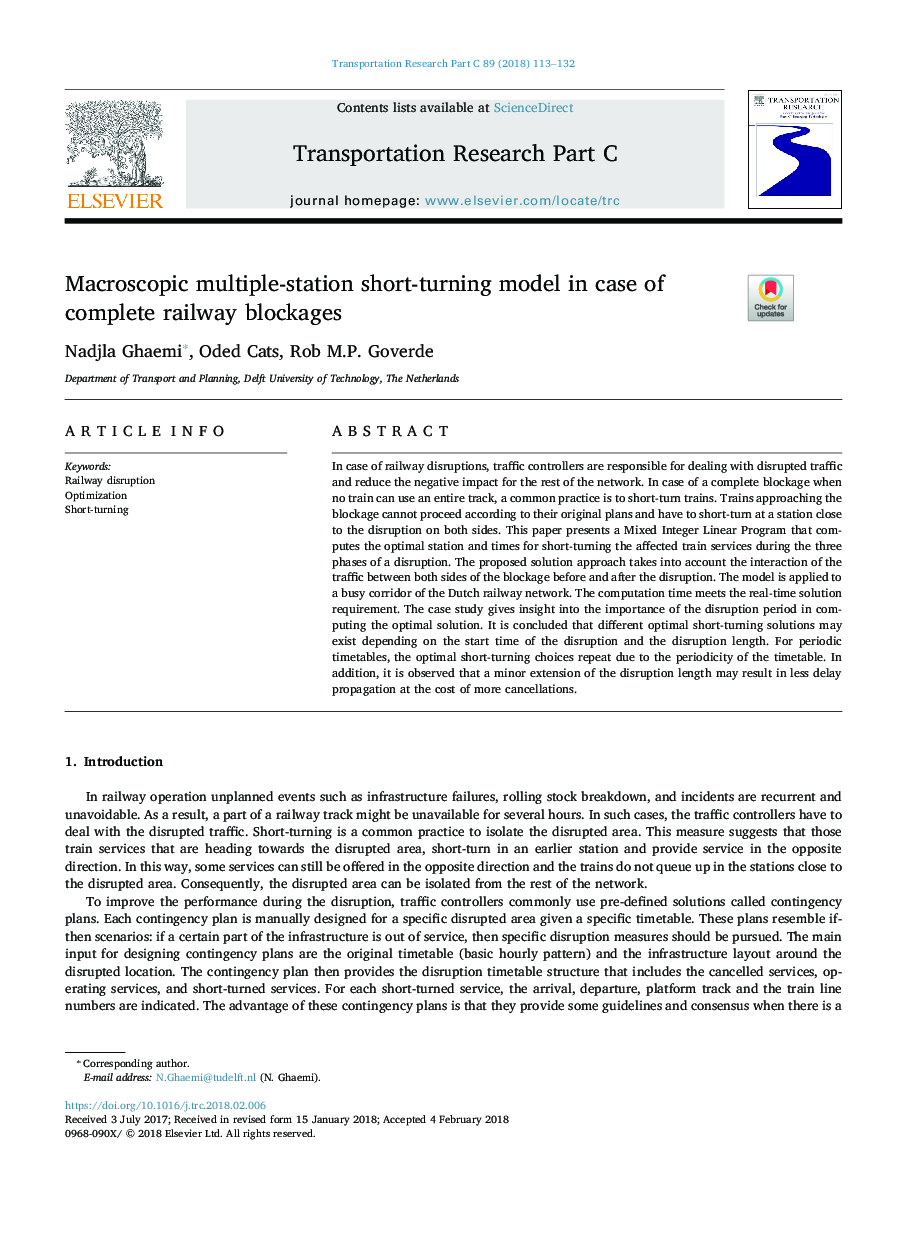| Article ID | Journal | Published Year | Pages | File Type |
|---|---|---|---|---|
| 6936058 | Transportation Research Part C: Emerging Technologies | 2018 | 20 Pages |
Abstract
In case of railway disruptions, traffic controllers are responsible for dealing with disrupted traffic and reduce the negative impact for the rest of the network. In case of a complete blockage when no train can use an entire track, a common practice is to short-turn trains. Trains approaching the blockage cannot proceed according to their original plans and have to short-turn at a station close to the disruption on both sides. This paper presents a Mixed Integer Linear Program that computes the optimal station and times for short-turning the affected train services during the three phases of a disruption. The proposed solution approach takes into account the interaction of the traffic between both sides of the blockage before and after the disruption. The model is applied to a busy corridor of the Dutch railway network. The computation time meets the real-time solution requirement. The case study gives insight into the importance of the disruption period in computing the optimal solution. It is concluded that different optimal short-turning solutions may exist depending on the start time of the disruption and the disruption length. For periodic timetables, the optimal short-turning choices repeat due to the periodicity of the timetable. In addition, it is observed that a minor extension of the disruption length may result in less delay propagation at the cost of more cancellations.
Keywords
Related Topics
Physical Sciences and Engineering
Computer Science
Computer Science Applications
Authors
Nadjla Ghaemi, Oded Cats, Rob M.P. Goverde,
